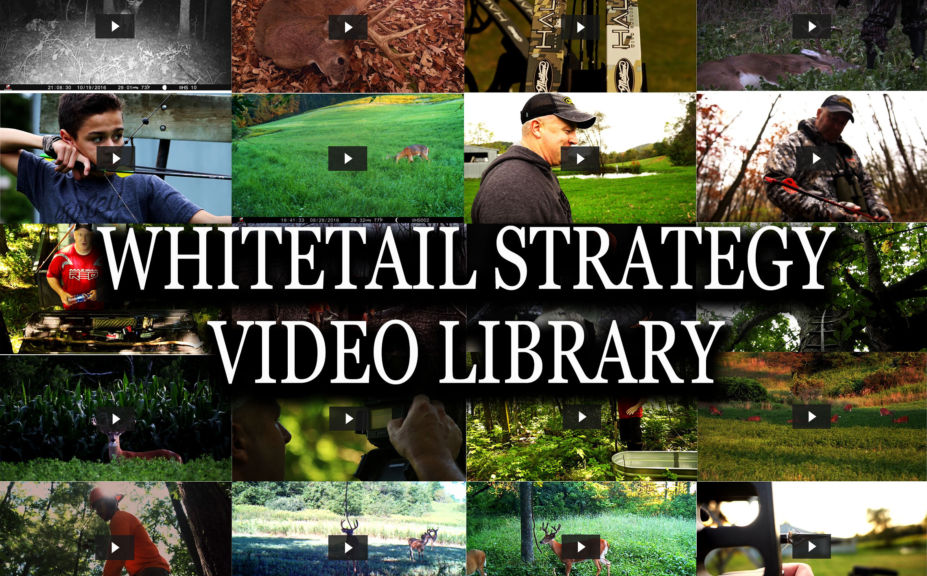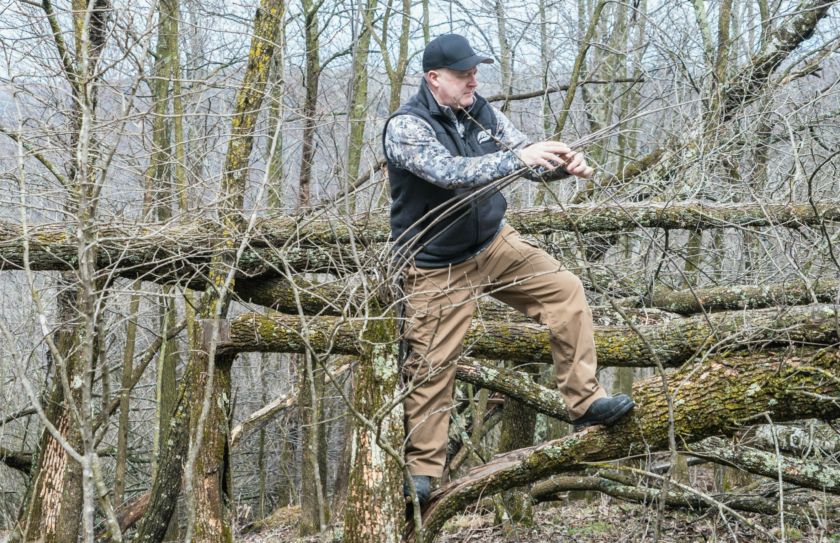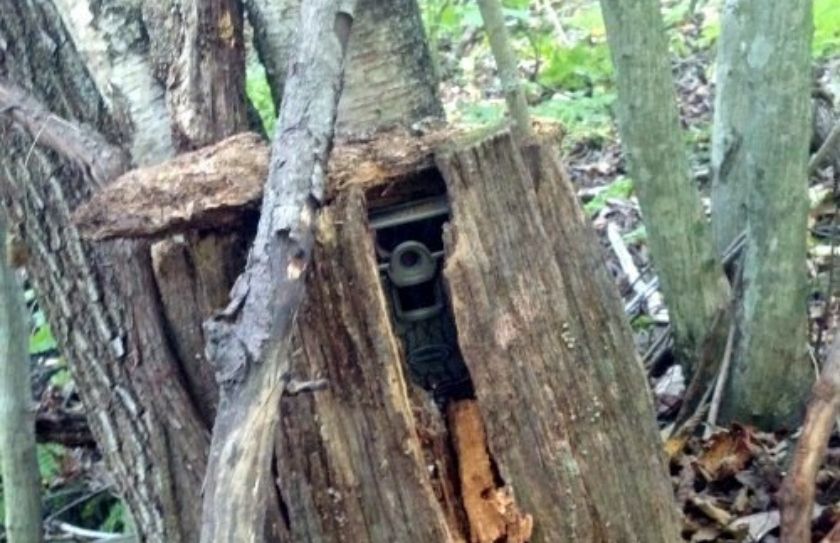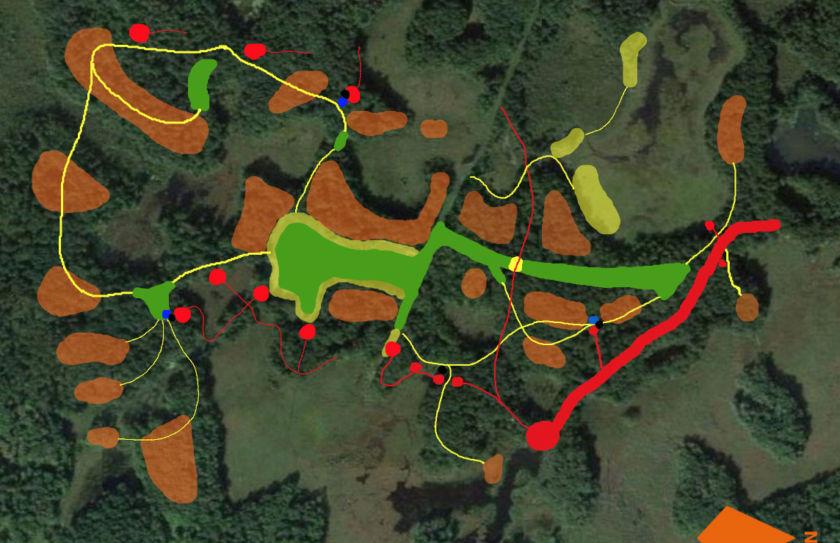
The 2-acre food plot was lush, green, full of forage and meticulously cared for with experienced and knowledgeable hands. Approximately 600 long, the 150 wide north/south planting was truly a focus of destination for the local deer herd. The improved bedding areas on both the east and west sides of the plot even further complimented the overall use and attraction for the entire area. The landowner hunted nearby, but avoided hunting the plot for fear of spooking deer and the tables were set for a successful foundation for this portion of the propertyright?
I guess if it was that easy, I wouldnt be using this story within the introduction of this article! There was one glaring problem and if you have followed some of my other writings maybe you know what I am about to discuss, but the one aspect of parcel design that the landowner was missing involved his lack of whitetail trespass strategies for potential concerns. And what is a trespassing concern? Well, we are going to have a hard time predicting the whims of a hardened criminal type that carefully plans his attack on your parcel and deer herd, however the bulk of trespassing concerns take place when neighboring hunters encroach on the borders of your parcel to take advantage of deer movements that you have knowingly or unknowingly created. A pair of high dollar sunglass sitting on the dash of your car in the supermarket parking lot isnt too inviting to the vast majority of people when you have rolled up the windows and locked the doors. However, a much higher percentage will take advantage of the situation when you make it easy for them to do so and that is why you need an effective defense.
The landowner above missed implementing a solid set of whitetail trespass strategies and he is not alone, so Im going to take you through the thought process of several principles of habitat design that will help you to understand my concerns. Movement arrows, paralleling habitat features, and both bordering dead zones and bedding areas are various habit features that you can use to drastically reduce the chance of running into any border crossing hunting thief. And towards the end of this article, Im hoping that I will have provided to you some pretty solid thoughts about why the situation I first described was a certain invitation for unwanted visitors.
Movement Arrows
In a natural setting a deer movement arrow can be a small cut within the side of a ridge pointing to an above crossing saddle, a bench, wood line, habitat change, lake, swamp, riveryou can probably get the picture. Within habitat creations a chainsawed travel corridor, bedding area edge creations and large timber cuttings all serve to tell a deer herd, you are going to travel on this line, in this direction no different than a sidewalk in a neighborhood does for a pack of big-wheel riding toddlers.
Movement arrows are very easy to see from the air. When I initially start with a client the first thing I actually take a look at is an ariel photo. I typically save the photo on the homepage of my phone, and continually look at it to soak it in prior to my visit. Access points are critical, but so are the movement arrows distributed throughout the parcel and often even more importantlyOFF of the parcel. Movement arrows can serve to move deer around the parcel, onto the parcel, and back off of the parcel all at the same time.
When designing your parcel is it is critical that you reduce the movement arrow affect the closer to the border an arrow is pointed. Food sources, travel corridors, and even dead areas that surround the parcel all serve to tell the local deer herd, you are going to travel on this line, in this direction AND THEN, you are going to sweep back onto my property like you are riding a high banked NASCAR turn at Bristol Motor Speedway.
Movement arrows are key in any hunting situation. Movement arrows define hunting opportunity on public land, and current or potential movement arrows define exactly what you can expect to accomplish on your own land. However, if you do not correctly use a movement arrow, you can easily point deer right off of your property and to your waiting neighbor.

Paralleling Habitat Features
By offering the safety and security of the features that you improve, you offer a low stress atmosphere. A feature that runs parallel to your borders gives to the local deer herd a line at which when crossed, they are safe. It doesnt take long for the deer to recognize these features while at the same time realizing that as soon as they get closer to the borders of your parcel, they are approaching a much higher level of risk and stress.
Eventually any deer using your habitat feature will approach the corners of your property and it is critical that you effectively steer that deer back onto your property. Due to the prevailing westerly winds in many Midwestern areas, a bedding area can often be a great habitat feature to tuck into a NW or SW corner because deer can feel safe accessing the bedding area from the interior of your parcel from the east, while recognizing the potential of hunter contact whether it be by site, sound or scent from neighboring parcels on the outside of your parcel. In this manner the bedding area becomes a dead end of deer movement and deer will feel comfortable bedding within a various corner, and then turning back around to feed back towards the interior of your property.
Another great feature is to provide a long, sweeping corner to facilitate deer travel back onto your parcel. Hard right angles should be avoided at all costs because deer are then pointed off of your parcel to neighboring parcels. Think about the high-banked corners of a NASCAR trackthey are designed to keep the racecar on the track no matter what the speed, and if you apply that concept to your own parcel you will be successful. If no deer are encouraged to leave your borders, your neighbors will have a very tough time narrowing down their location of trespassing efforts. There is also another feature you can promote on your parcel to keep those deer off of your borders and I think you will like the advice, simply because it often involvesdoing nothing. Paralleling habitat features are one of the strongest whitetail trespass strategies that you can employ!
Dead Areas
Now I dont want you to picture a habitat wasteland of sand and stones because instead a Dead Area is an area along the border of your parcel that features a habitat type that has a drastically lower level of quality than habitat located within the interior of your parcel. Mature open hardwoods are a great example of a dead area, fallow fields are another, and even summer food sources that are devoid of attraction into the hunting season can be another possible type of a dead area. Think of this area as an area to offer a deer-free approach to your stand locations, an area to allow your scent to blow into while you are sitting on your treestand, and an area that becomes a noticeable buffer of less attractive habitat to the local deer herd.
Again, the key is a habitat type that has a drastically lower level of quality than habitat located within. That could mean that you do nothinghowever, that could mean that you still cut undesirable and weak tree-species to improve the overall habitat % of your entire parcel, it may mean that you offer various species of low grass cover that are highly attractive to small game species while low on the attraction scale for whitetails, and it may also be appropriate for you to improve the area for wetlands to increase the overall habitat diversity on your parcel. A dead area is not really dead to your parcel, dead to you, or dead to other wildlife species, but instead, Id like your focus to be that it is for the most part dead to the local deer herd because they simply have better options for food, security, and cover on the INTERIOR of your parcel. For more details on creating these features, check out "###a href="Whitetail" class="redactor-linkify-object">https://www.whitetailhabitatso... Habitat Dead Spots."
Border Bedding
Dead areas work exceptionally well for hunter access, but where you can't access or don't need to...a bedding area can be a great choice! It's typically fairly easy to make your land, better than your neighbors in terms of it's ability to hold deer. That isn't the case with neighbor's who enjoy building the habitat as much as you do, but typically those aren't the neighbors that you need to worry about!
Building a bedding area through timber harvest, cuttings or tree and grass plantings can be a great way to defend against fence-sitters. Why? Because this is an area that you rarely wander into, if ever at all. By creating high quality bedding along a border you can maximize your acres dedicated to "all deer all the time". If a neighbor gets too close to a border bedding area, they will push the deer inward towards the core area of your land, and not off of your land. The worst thing you can do where there are neighborly concerns is to plant a food plot, because deer can have just as much of a chance to come from your neighbor's land to feed, as they do from your own. Instead, try creating bedding areas in remote areas to not only get the most our of your acreage, but to make sure that if your neighbors do intrude too much they move deer into the heart of your land.
For more great whitetail strategies, be sure to check out our Video Library!

Conclusion
*Are your own habitat improvements encouraging problems, or are they a part of a strong combination of whitetail trespass strategies designed to eliminate problems before they even begin?
Im sure that youve probably had time to think about the landowners situation at the beginning of this article. The adjacent landowner had a stand within 10 yards of the property border and because the food plot was pointed in a long narrow rectangle towards the border of the parcel the deer were encouraged to follow. It did not help that the food plot was within 20 yards of the border either! The solution was to square down the food plot to sandwich it between the bedding areas on either side, promote a dead area on the north and south end to encourage a long and continuous bedding to feeding to bedding feature of several hundred feet running parallel to the border, and to effectively hide those deer feeding in the plot with some type of screening cover. The landowner could quickly turn a negative into a positive, and substantially increases his defenses for future trespassing concerns. Temptation could easily be removed from the neighboring landowner by encouraging the deer to move within the property borders, and not off of them. I would be willing to bet that with the landowner changes, that neighbors stand within 10 yards of the border has most likely been removed because the landowner has effectively rolled up the windows and locked the doors to the temptation of stealing a hunt.


